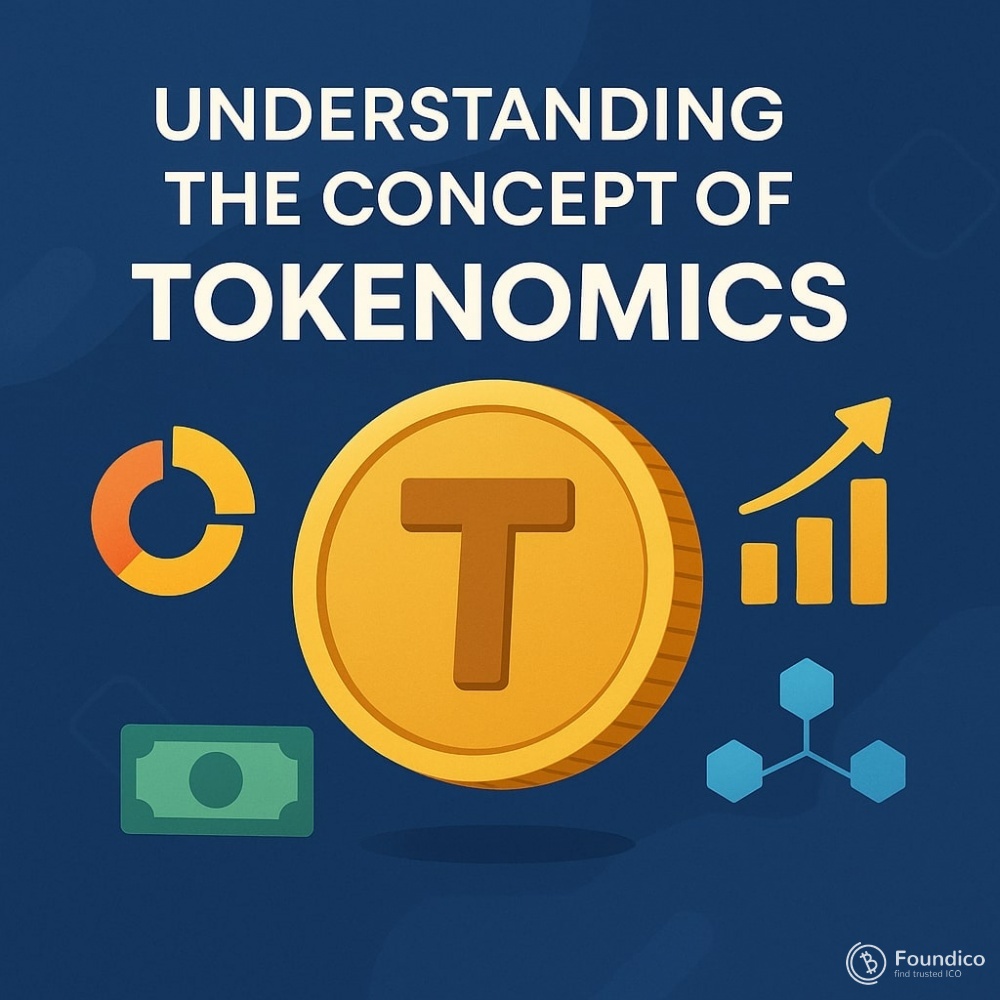Understanding the Concept of Tokenomics

By Dr. Pooyan Ghamari, Swiss Economist and Visionary
The rise of blockchain and cryptocurrencies has introduced new economic models that redefine value creation and distribution in the digital age. At the heart of this transformation lies tokenomics, a term that combines “token” and “economics.” More than just a buzzword, tokenomics represents the blueprint of how a crypto asset functions, sustains itself, and grows within its ecosystem.
In this article, I will explore the concept of tokenomics, its key components, and why it is vital for both investors and innovators in the blockchain space.
1. What Is Tokenomics?
Tokenomics refers to the study and design of the economic system surrounding a cryptocurrency or digital token. It encompasses all aspects of a token’s creation, distribution, supply mechanics, incentives, and utility.
Just as traditional economies rely on monetary policies, token-based ecosystems depend on tokenomics to maintain balance and drive participation. A well-designed tokenomics model can ensure long-term sustainability, while a flawed one can lead to collapse, no matter how innovative the underlying technology.
2. Key Components of Tokenomics
a. Token Supply
-
Fixed Supply: Some tokens, like Bitcoin, have a capped supply. This scarcity often creates a “digital gold” effect, driving demand.
-
Inflationary Supply: Other tokens may have no supply cap, introducing new units over time to encourage circulation or reward participants.
-
Burn Mechanisms: Some projects regularly remove (burn) tokens from circulation to increase scarcity and support value.
b. Token Distribution
-
Initial Allocation: Tokens can be distributed via public sales (ICOs, IEOs), airdrops, or reserved for teams, developers, and investors.
-
Vesting Periods: Time-locked releases prevent sudden large sell-offs and align incentives for long-term commitment.
c. Utility and Use Cases
-
Medium of Exchange: Tokens may serve as currency within a network.
-
Governance Rights: Holders can vote on proposals and influence project development.
-
Staking and Rewards: Users may lock tokens to earn interest, secure networks, or gain access to services.
-
Access and Privileges: Tokens can grant entry to exclusive features, ecosystems, or memberships.
d. Incentive Structures
A strong tokenomics model motivates participants—whether users, developers, or validators—to act in ways that sustain the network. Incentives may include staking rewards, yield farming, or transaction fee sharing.
e. Economic Sustainability
Tokenomics must balance supply, demand, and incentives to avoid inflationary pressures or token devaluation. Without careful planning, a token’s value can erode quickly.
3. The Importance of Tokenomics for Investors
For investors, tokenomics is not an abstract concept but a crucial analytical tool. Before investing in a crypto project, it is essential to ask:
-
How is the token supply managed?
-
What real-world or digital utility does the token provide?
-
Are incentives aligned for long-term growth?
-
Does the project have mechanisms to prevent manipulation or inflation?
Understanding tokenomics helps investors identify projects with genuine long-term potential versus those built on speculation.
4. Tokenomics in Action: Real-World Examples
-
Bitcoin (BTC): A capped supply of 21 million coins, halving events, and scarcity-driven value appreciation.
-
Ethereum (ETH): Utility-driven, powering smart contracts, DeFi, and NFTs, with staking incentives after the shift to Proof of Stake.
-
Binance Coin (BNB): Burn mechanisms combined with exchange-based utility have made BNB a leading token in the market.
Each of these examples showcases how carefully designed tokenomics directly impacts adoption and valuation.
5. The Challenges of Tokenomics
Despite its promise, tokenomics also faces hurdles:
-
Speculative Bubbles: Overhyped tokens with weak utility often collapse after initial price surges.
-
Centralization Risks: Unequal token distribution can give too much power to founders or early investors.
-
Regulatory Pressures: Governments worldwide are scrutinizing token-based economies, raising questions about compliance and legality.
The success of tokenomics depends not only on mathematical models but also on governance, transparency, and adaptability.
6. The Future of Tokenomics
As blockchain technology matures, tokenomics will continue to evolve. Emerging trends include:
-
Dynamic Supply Models: Adapting token supply based on market conditions.
-
Hybrid Utility Tokens: Combining governance, access, and payment functions.
-
Integration with Real Assets: Tokenization of real estate, commodities, and equities will demand sophisticated tokenomic frameworks.
-
Sustainability Focus: More projects will design eco-friendly tokenomics, considering energy use and long-term social impact.
These developments will cement tokenomics as a central pillar in shaping the future of finance.
Tokenomics is more than technical jargon—it is the economic engine that determines whether a blockchain project thrives or fails. For innovators, it provides the framework to build sustainable ecosystems. For investors, it is a critical lens through which to evaluate opportunities.
As a Swiss Economist and Visionary, I see tokenomics as a reflection of our broader shift toward digital economies—where trust, scarcity, and value are redefined. The more deeply we understand tokenomics, the better prepared we are to participate in the transformative power of blockchain.
